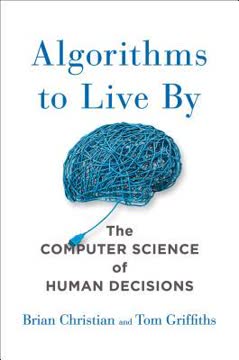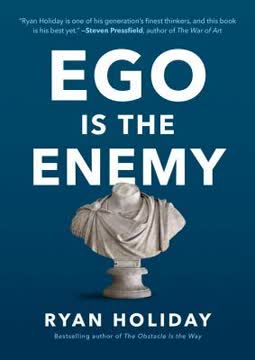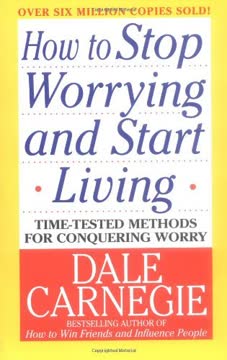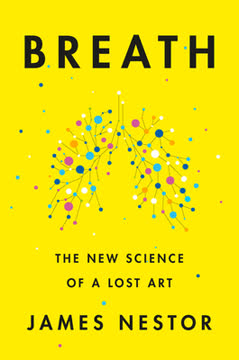Key Takeaways
1. Reasoning is the Mind's Power to Distinguish Truth
Reasoning thus enables us to ascertain the nature of a thing without actual trial.
Mind's architect. Reasoning is the faculty that processes raw sensory input and concepts into complex thoughts, science, and philosophy. It allows us to distinguish truth from falsehood and right from wrong.
Essential skill. While everyone reasons, most do so incorrectly, accepting illogical ideas without examination. Training in logic develops this faculty, providing a significant advantage in understanding and navigating the world.
Knowledge is power. Logic teaches correct reasoning, leading to knowledge. Knowledge empowers us to foresee outcomes, avoid mistakes, and achieve seemingly impossible goals, making it more valuable than physical strength.
2. Thinking Progresses Through Concepts, Judgments, and Reasoning
The first step or stage in the process of thinking is that which is called a concept.
Building blocks. Thinking begins with concepts, mental representations formed from perceptions. These are refined through presentation, comparison, abstraction, generalization, and naming.
Connecting ideas. The next step is judgment, comparing two concepts to find agreement or disagreement. This forms basic truths like "A horse is an animal" or "A horse is not a cow."
Complex thought. Reasoning, the highest stage, compares two judgments through a third concept or judgment. This process, often expressed as a syllogism, allows us to deduce new truths from existing ones.
3. Concepts are General Ideas, Not Mental Images
A concept cannot be represented by a concrete image.
Abstract notions. Unlike percepts (mental products of real, particular things), concepts are general ideas representing common attributes of a class. You can image a specific horse, but not the general concept of "horse" encompassing all horses.
Class qualities. Concepts contain only the qualities common to an entire class, not the particular details of individuals. An image must be of a specific unit with individual marks.
Translating concepts. While concepts can't be imaged, effective communication requires translating them into representative objects or examples. Apperception, influenced by prior experience, shapes how we form and understand concepts.
4. Terms are Symbols for Concepts, Classified by Meaning and Scope
A term is the outward symbol of a concept; and that: The concept is the idea expressed by the term.
Naming ideas. Terms are words or phrases that symbolize concepts, acting as labels for mental ideas. Most words in language represent general concepts rather than specific individuals.
Types of terms. Terms are classified based on what they denote:
- Singular (one thing) vs. General (a class)
- Collective (aggregate whole) vs. Distributive (each individual)
- Concrete (thing or attribute as adjective) vs. Abstract (attribute as noun)
- Positive (presence of quality) vs. Negative (absence of quality)
- Absolute (independent) vs. Relative (implies another term)
Scope of terms. Terms also have extension (number of individuals) and intension (number of qualities). As extension increases, intension decreases, and vice versa.
5. Judgments Compare Concepts, Expressed as Propositions
A Proposition is a Judgment expressed in words.
Stating relations. A judgment is the mental act of comparing two concepts and deciding their agreement or disagreement. A proposition is the verbal statement of this judgment.
Proposition parts. Every proposition has a Subject (what is judged), a Predicate (what is affirmed/denied), and a Copula (the linking verb, usually "is" or "is not").
Proposition types. Propositions are classified by:
- Quality: Affirmative (agreement) or Negative (disagreement)
- Relation: Categorical (unconditional), Hypothetical (conditional), Disjunctive (alternative)
- Quantity: Universal (whole subject) or Particular (part of subject)
6. Basic Inference: Immediate Reasoning
Immediate Reasoning, by which is meant the deduction of one proposition from another which implies it.
Single premise. This simplest form of reasoning derives a conclusion directly from one proposition without needing a third term for comparison.
Opposition. Propositions with the same subject and predicate but differing in quality or quantity have specific logical relationships (contraries, sub-contraries, subalterns, contradictories) governed by laws of truth and falsehood.
Conversion. Another method is conversion, transposing the subject and predicate while preserving the inference. Rules ensure no term is distributed in the converse if not in the convertend.
7. Inductive Reasoning Infers General Laws from Particular Facts
Induction, then, is that operation of the mind, by which we infer that what we know to be true in a particular case or cases, will be true in all cases which resemble the former in certain assignable respects.
From specific to general. Induction moves from observing particular facts or instances to inferring a general truth or law that applies to all similar cases. It is a synthetic and ascending process.
Basis in nature. This process relies on the axiom that "What is true of the many is true of the whole," grounded in the belief in the uniformity and orderliness of nature's laws.
Types of induction. Perfect induction examines all particulars (rarely possible). Imperfect induction infers from a sample to the whole, extending beyond known data and forming the basis of scientific discovery.
8. Testing Ideas: Hypothesis & Theory
A Hypothesis is: "A supposition, proposition or principle assumed or taken for granted in order to draw a conclusion or inference in proof of the point or question..."
Educated guesses. Hypotheses are tentative explanations or assumptions proposed to account for observed facts. They are working ideas that need testing.
Verified hypotheses. A theory is a hypothesis that has been extensively tested and verified by explaining a wide range of facts and phenomena. Theories were once hypotheses.
Forming hypotheses. Hypotheses often arise from intuition or subconscious insights ("anticipation") rather than purely conscious reasoning. They are then tested against facts, sometimes using methods like Mill's (Agreement, Difference, etc.).
9. From Laws to Facts: Deductive Reasoning
Deductive Reasoning is that process of reasoning by which we arrive at the necessary consequences, starting from admitted or established premises.
From general to specific. Deduction moves from a general truth or law to infer a particular truth about a specific case included in that general class. It is an analytic and descending process.
Primary basis. The core principle is the axiom: "Whatever is true of the whole is true of its parts." If a general statement is true, it must be true for every individual instance within that general category.
Sources of premises. General truths used in deduction come from induction, intuition (like mathematical axioms), or accepted hypotheses/theories. Mathematical reasoning is a form of deduction based on equality.
10. The Syllogism is the Structure for Mediate Reasoning
A Syllogism is an argument expressed in strict logical form so that its conclusiveness is manifest from the structure of the expression alone, without any regard to the meaning of the terms.
Formal argument. The syllogism is the standard structure for expressing mediate reasoning, where two terms are compared through their relation to a third, called the middle term.
Three parts. A valid syllogism consists of exactly three propositions: a Major Premise, a Minor Premise, and a Conclusion. It also has exactly three terms: Major, Minor, and Middle.
Rules of validity. Syllogisms must follow strict rules regarding the quality and quantity of premises and terms (e.g., middle term must be distributed, cannot infer a distributed extreme from an undistributed premise) to ensure the conclusion logically follows.
11. Reasoning by Similarity: Analogy
Analogy is that process of thought by which we infer that if two things resemble each other in one or more particulars, they will resemble each other in some other particular.
Inferring likeness. Analogy is a form of reasoning based on resemblance: if two things are similar in several known ways, they are likely similar in other unknown ways.
Common usage. This is a frequent, often intuitive, method used in daily life and initial scientific exploration (e.g., medical diagnosis, geological inference).
Potential pitfalls. Analogy is plausible but often deceptive. Hasty inferences based on superficial resemblances can lead to false conclusions (e.g., mistaking poisonous look-alikes). Caution and verification are essential.
12. Understanding Fallacies is Crucial to Correct Reasoning
A Syllogism is said to be valid when the conclusion logically follows from the premises; if the conclusion does not so follow, the Syllogism is invalid and constitutes a Fallacy...
Errors in logic. A fallacy is an argument that appears valid but violates the rules of logical reasoning, leading to an incorrect conclusion. Recognizing fallacies is key to avoiding faulty thinking.
Common fallacies. Examples include:
- Undistributed Middle: The middle term doesn't connect the major and minor terms properly.
- Affirming the Consequent/Denying the Antecedent: Incorrect inferences in hypothetical syllogisms.
- Hasty Generalization: Drawing broad conclusions from insufficient specific instances (related to faulty induction/analogy).
Detecting errors. Training in logic provides the tools (like the rules of the syllogism) to identify these structural flaws in arguments, whether made by oneself or others.
Last updated:
Review Summary
The Art of Logical Thinking receives mixed reviews, with an average rating of 3.35/5. Positive reviews praise its insights on reasoning, logical thinking, and decision-making. Readers find it helpful for understanding inductive and deductive reasoning. However, some criticize the outdated language and formatting errors in certain editions. The book is considered a basic introduction to logic, beneficial for those new to the subject but potentially too simplistic for others. Overall, readers appreciate its content but suggest caution regarding the edition chosen.
Similar Books










Download PDF
Download EPUB
.epub digital book format is ideal for reading ebooks on phones, tablets, and e-readers.





